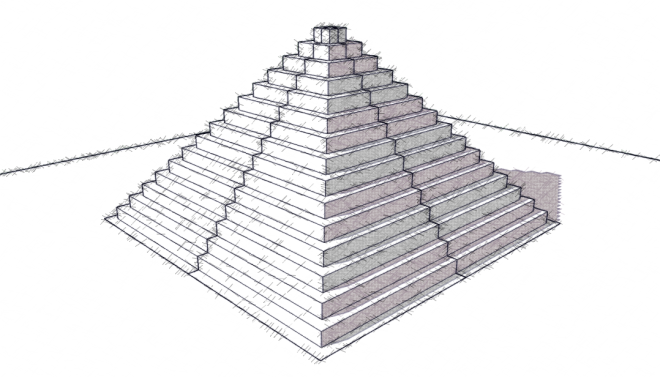Now Flinders Petrie measurements can help us to differentiate the different levels of construction of the great pyramid. Indeed we have seen that there is a clear tendency to have maximas followed by a decrease to a minimum preceding the next maximum. This abrupt transition from a minimum to a maximum could mean the presence of one of the levels of a step pyramid. These levels should be found each 18,2 meters if we consider the main maximums only and 9,1 meters if we consider all the maximum observed*. The levels are thus theoricaly defined: (0), 18, 27, 54, 73, 91, 109 128, which remains close to the levels deduced from the measurements (0, (18), 30, 54, 70, 90, 106, 126).
The Egyptians most certainly used a map of the Pyramid of Cheops before building it. But on what scale have they worked? To answer this question, we will draw on the work of Ole Jorgen Bryn, and instead of considering the number 7 as a ‘magic’ divider, we will use the number 8 because there are probably 7 massives preceeding the smooth faced pyramid. The pyramid being 280 royal cubits high with a half base of 220 royal cubits, divided by 8, this made a grid made of rectangles of 27.5×35 royal cubits or 192.5×245 palms. And a ratio of 14/11 (35 / 27.5). 35 royal cubits corresponds roughly to 18m.
* In this case, the massives of the pyramid should be found theoricaly each 9,1 meters, that is at following heights: (0) 9 18 27 46 55 64 73 82 91 100 109 119 128 137 (or corresponding height given by Flinders Petrie that is for example 83m instead of 82,1… See Flinders Petrie maximum coordinates article)
